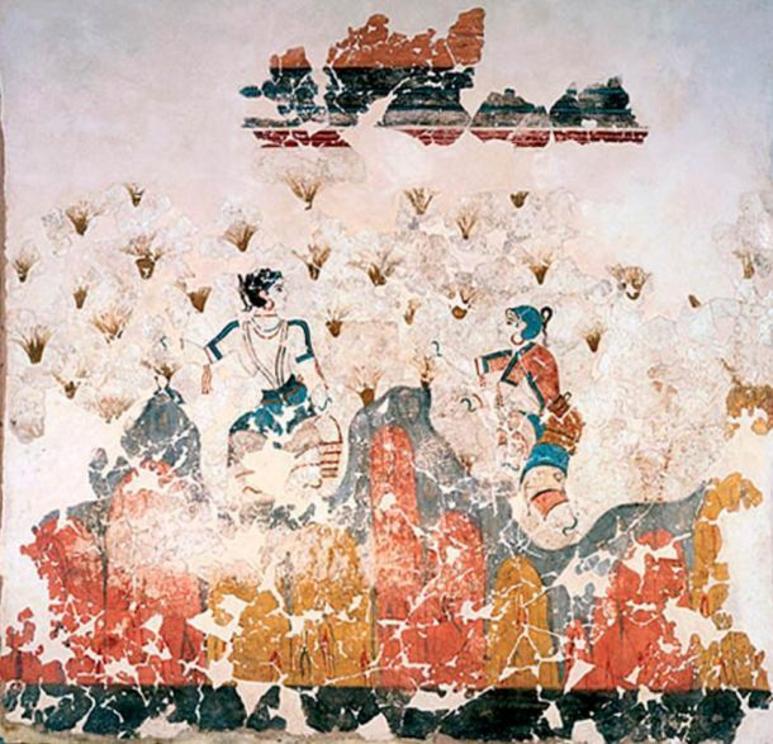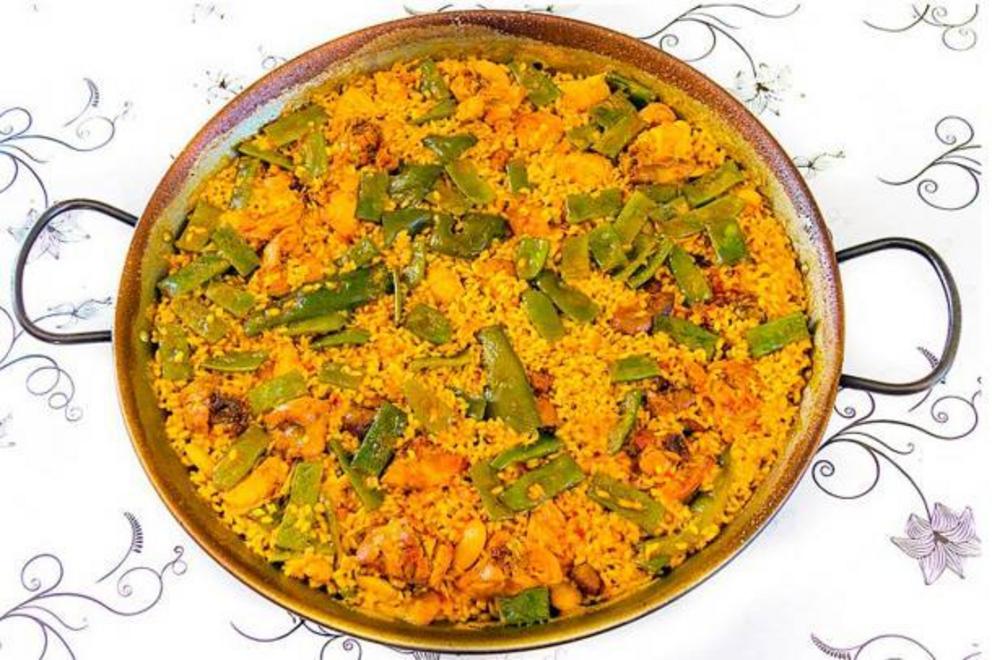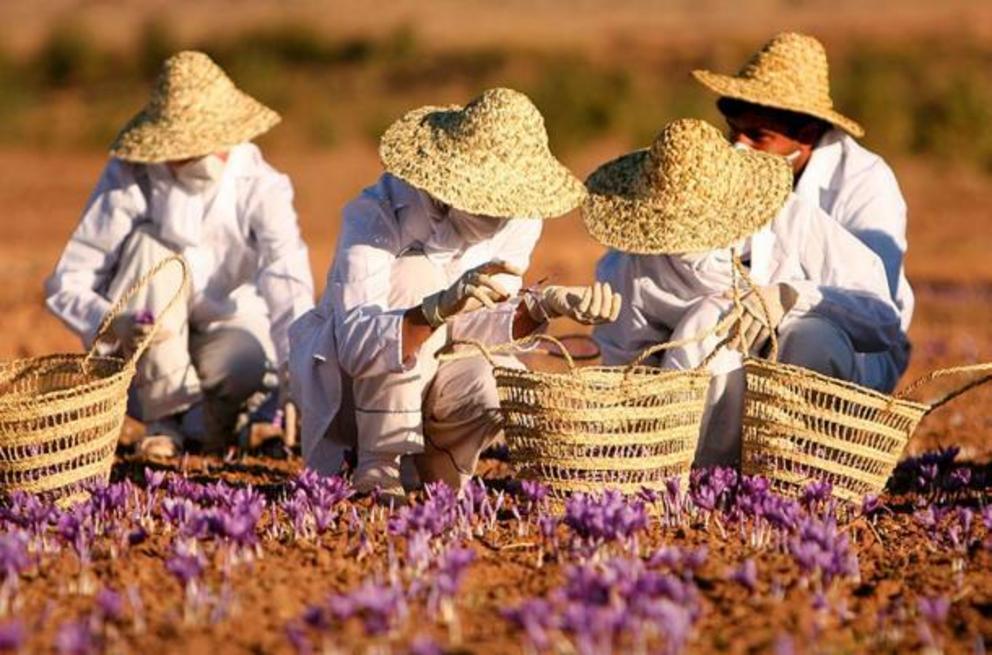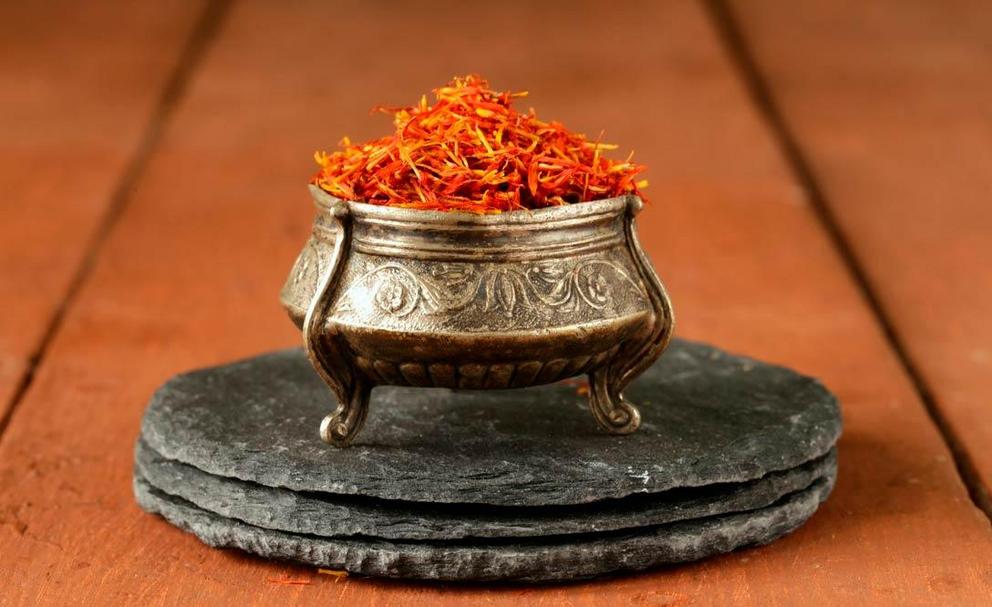Saffron: tracing the origins of a treasured ancient spice
Top image: Saffron.
Considered the world’s most expensive spice, saffron has been highly valued by many ancient civilizations, but its origins have long been debated. A new study claims to have traced the evolution of the plant back to ancient Greece.
The Origins of Saffron are Finally Found!
Saffron has primarily been a spice for cooking, but also used in medicines, dyes, and perfumes. It is obtained from the flower (specifically the stigma and style) of the Crocus sativa (commonly known as the saffron crocus). Although its origins have been debated in the past, with Iran, Mesopotamia, and Greece all suggested as the possible homeland, a new study published in the journal Frontiers in Plant Science , provides strong evidence that the plant was first domesticated in Bronze Age Greece, around 1700 BC or earlier.
The researchers write in their study that they examined ancient art and combined that information with recent genetics “to trace the evolutionary origin of saffron crocus.” They write that they found that ancient artwork from Greece, Iran, and Mesopotamia along with recent cytogenetic and comparative next-generation sequencing approaches all “point to saffron’s emergence and domestication in ancient Greece.”
According to the research team, “The most prominent pictures of potentially cultivated saffron in historic artworks were created during the Aegean Bronze Age, particularly influenced by the Minoan civilization, dating back to 1700–1500 BCE.” Crocus depictions by that culture are said to appear in frescoes, and on ceramics and textiles. For example, they found depictions of people gathering saffron and using it in rituals on several frescoes.
 Fresco of saffron gatherers from the Bronze Age excavations in Akrotiri on the island of Santorini, Greece.
Fresco of saffron gatherers from the Bronze Age excavations in Akrotiri on the island of Santorini, Greece.
Regarding the genetics of this plant, it is worth noting that the saffron crocus is a triploid, meaning it has three sets of chromosomes, this leads to “many genetic peculiarities” including “at least partial sterility,” according to the research paper. There are two main scenarios put forward to explain the origin of saffron’s triploidy - allotriploidy, which comes from the hybridization between individuals of different species or autotriploidy, which originates by the hybridization between individuals of the same species. Either way, the researchers write “at least one parent is generally assumed to be C. cartwrightianus , a species occurring in southeastern mainland Greece and on Aegean islands.” The researchers also note that there is “a large body of evidence for saffron’s autotriploid origin from two different, in Greece naturally occurring, cytotypes of C. cartwrightianus.”
From there, saffron cultivation spread to other parts of the world.
There are several stories of how saffron arrived in Kashmir. One of these tales claims that saffron was introduced into the region by the Persians in 500 BC as a means to expand the market. Other sources date the arrival of saffron to the 12th century, when two traveling Sufi saints , Khawaja Masood Wali and Sheikh Sharif-u-din Wali, presented a crocus bulb to a local chieftain after he cured them of an illness.
 Saffron in Savojbolagh County, Tehran, Iran.
Saffron in Savojbolagh County, Tehran, Iran.
A Touch of Gold for Food, the Body, and Books
Saffron is best-known for its culinary use as a spice, and it is used in the many cuisines around the world. Some popular dishes that make use of saffron in their preparation include Spanish paella, Iranian jeweled rice and khoresh, and Indian biryani. Saffron has also been used as a fabric dye , for instance, in China and India, and was used as a freshener in public spaces by the Romans. Additionally, saffron was used in the illumination of Medieval manuscripts . The monks of that period discovered that a mixture of egg whites and saffron would produce a yellow glaze that could serve as a substitute for gold.
 Original paella from Valencia, Spain.
Original paella from Valencia, Spain.
Moreover, saffron was prized in the past for its medicinal value and was used to treat all sorts of ailments. For instance, Alexander the Great would bathe his battle wounds in saffron infused warm water, believing in its healing properties. The reputation of saffron as a potent medicine was so strong that it was even prescribed as a cure for the bubonic plague during the Middle Ages. Even today, saffron continues to be employed by practitioners of traditional medicine , and is used to treat such afflictions as asthma, depression, and sexual dysfunction.
Threats to the Saffron Trade
Saffron is the world’s most expensive spice. In Kashmir, for instance, saffron may be sold by farmers for “as much as 250,000 INR or $3,400 USD a kilogram, or $1,550 a pound”. An Afghan-based company, Rumi Spice, sells its saffron for “$18 (£14) per gram”. The high price of saffron is due to the fact that stigmas have to be painstakingly removed from the rest of the flower by hand. As saffron is such a lucrative crop, it has led to the problem of adulteration, in which the real thing is replaced by substandard or even fake saffron.
The adulteration of saffron, however, may not be the biggest problem faced by this spice. The saffron crocus flourishes in a relatively dry and sunny climate, and changes in these conditions have a negative effect on its growth. It has been reported that in Kashmir in recent years, saffron crops have been damaged either by droughts or by untimely excessive rainfall, resulting in a drop in the harvest. One Kashmiri saffron farmer, for instance, reports that during the 1990s, the harvest was as much as 400 kg (881.85 lb.). This amount was reduced by half during the 2000s, and went down further to 15 kg (33.07 lb.) and 7 kg (15.43 lb.) in 2016 and 2018 respectively.
It is due to the changing environment , specifically the lack of rain, that saffron cultivation in Kashmir has suffered such a negative impact. Efforts and funds have been spent to ensure the saffron fields are irrigated, though these seem to be of no use. Some have placed the blame on land mafia, others on the ineffectiveness of the government department involved in the project, and still others on the farmers themselves, who rely on traditional methods of cultivating saffron, and are not well-aware of the changing conditions, and the methods to counter them.
 Collecting saffron at a farm in Torbat heydariyeh, Razavi Khorasan province, Iran.
Collecting saffron at a farm in Torbat heydariyeh, Razavi Khorasan province, Iran.
While the problem faced by saffron farmers in Kashmir is dire, it may not spell the end of saffron just yet. Although the quality of the saffron produced in this region is considered to be the highest in the world, the majority of saffron (up to 85%) is produced in Iran, according to a 2012 report by the UN Food and Agriculture Organization. Nevertheless, should that country be affected by changes in climate similar to those suffered by Kashmir, saffron may one day disappear.

